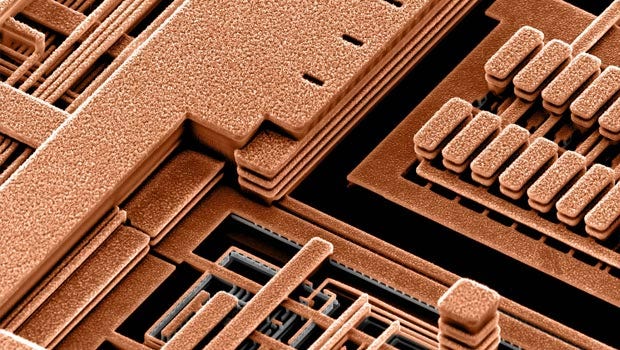
What Are the New Interconnect Materials Powering Next-Gen Devices?
Share
According to the report by Next Move Strategy Consulting, the global New Interconnect Materials Market size is predicted to reach USD 17.16 billion by 2030 with a CAGR of 11.6% from 2024 to 2030.
As computing speeds soar and chip architectures grow more complex, the materials used to connect these components—known as interconnects—are becoming just as critical as the processors themselves. From artificial intelligence (AI) systems and 1-nanometer chips to quantum computing, the industry is in urgent need of high-performance, reliable, and scalable interconnect materials.
Click Your Free Sample Today: https://www.nextmsc.com/new-interconnect-materials-market/request-sample
Why Are New Interconnect Materials Crucial for the Future of Computing?
According to IBM, the explosive growth in data processing demands and miniaturization of chips is pushing the limits of traditional copper-based interconnects. As devices move into the sub-2-nanometer era, signal integrity, power efficiency, and thermal stability are under strain.
According to IBM Research, the development of 1-nanometer chips using vertical transport field-effect transistors (VTFETs) has necessitated a shift away from copper toward ruthenium. The latter offers superior resistance to electromigration and better scalability at nanoscale dimensions.
Key Challenges Driving the Change:
- Increased power density leads to overheating in copper interconnects.
- Signal delay becomes pronounced in multi-level metal layers at nanoscale.
- Electromigration failures compromise long-term device reliability.
Summary:
- Next-gen computing architectures require materials that ensure high signal fidelity and thermal stability.
- Ruthenium and hybrid interconnects are emerging as strong contenders to replace copper in nanoscale nodes.
How Are Interconnects Evolving to Meet High-Speed Design Demands?
According to Design News, the rise of AI artificial intelligence workloads, cloud computing, and edge devices has brought high-speed signalling challenges to the forefront. The data rates in some commercial systems now exceed 56 Gbps, with next-generation platforms pushing well beyond 112 Gbps.
To accommodate such high-speed signals, new interconnect designs are focusing on:
- Low-loss dielectrics: Reducing signal attenuation over distance.
- Shorter, denser routes: Minimizing delay and inductive coupling.
- Advanced packaging: Including chiplet-based architectures where signal fidelity between dies is critical.
Summary:
- Higher frequencies require material innovations beyond conductor metals.
- Efficient interconnects now involve holistic design—materials, packaging, and geometry.
What Role Do Interconnects Play in Quantum Computing?
According to MIT News, in classical computing, interconnects simply transmit electrical signals. In quantum computing, however, they must manage qubits—extremely fragile quantum states—requiring ultra-precise communication with minimal noise or decoherence.
A breakthrough from MIT, published in March 2025, introduced a superconducting switch that enables direct interconnectivity between multiple quantum processors, reducing the need for repeated routing through external devices. This innovation allows for multi-qubit entanglement and state sharing, marking a leap toward scalable quantum systems.
Advantages of the New Quantum Interconnect:
- Minimal energy loss via superconducting pathways.
- Direct processor-to-processor communication.
- Scalability: Enabling networked quantum chips instead of monolithic structures.
Summary:
- In quantum architectures, interconnects are pivotal in maintaining coherence and enabling scale.
- Superconducting switches are redefining interconnect designs for quantum networks.
What Makes Ruthenium a Viable Successor to Copper?
According to IBM research, copper has long been the material of choice for chip interconnects, but scaling below 2 nm makes it less viable due to electron scattering, increased resistivity, and integration issues.
Ruthenium, as highlighted by IBM’s 2025 research on 1 nm chips, offers:
- Lower resistivity at atomic scales
- High electromigration resistance
- Compatibility with existing deposition processes
This makes it well-suited for advanced vertical architectures like VTFET, were current flows vertically, allowing for denser chip layouts.
Summary:
- Ruthenium is not just a performance upgrade—it is a scaling enabler.
- As device nodes shrink, ruthenium provides both electrical and thermal resilience.
Are Today’s Interconnect Materials Ready for Tomorrow’s Devices?
Current materials—while sufficient for many traditional applications—are not optimized for the future of:
- AI accelerators
- Chiplet-based systems
- Quantum networks
Evolving workloads and fabrication constraints demand materials with:
- High current-carrying capacity
- Low parasitic resistance
- Greater thermal conductivity
The industry is seeing a transition toward:
- Hybrid interconnect materials (e.g., Ruthenium + Cobalt)
- Superconducting elements (for quantum and cryogenic computing)
- Optical interconnects in early R&D for chip-to-chip data transfer
Summary:
- Next-gen devices need more than miniaturization—they require material innovation.
- The transition is happening now, led by research institutions and industrial R&D.
Next Steps: How Should Innovators Prepare?
As device ecosystems grow more complex, here are strategic takeaways for designers, engineers, and R&D stakeholders:
- Monitor material research closely—especially from IBM, MIT, and other primary innovators.
- Invest in simulation tools that model interconnect behaviour at terahertz speeds.
- Adopt advanced packaging strategies, including 2.5D and 3D integration.
- Evaluate alternatives like ruthenium early, especially for nodes <2 nm.
- Collaborate across domains—interconnect innovation spans materials science, electronics, and quantum physics.
Conclusion: Are We at the Dawn of a New Interconnect Era?
From quantum computing to 1 nm logic chips, interconnects are no longer passive elements—they are active enablers of innovation. Ruthenium is redefining conductivity at nanoscale. Superconducting switches are expanding the possibilities of quantum coherence. And high-speed interconnect design is catching up with the demands of AI and edge computing.
The message is clear: materials matter more than ever—and they are the next frontier of performance.